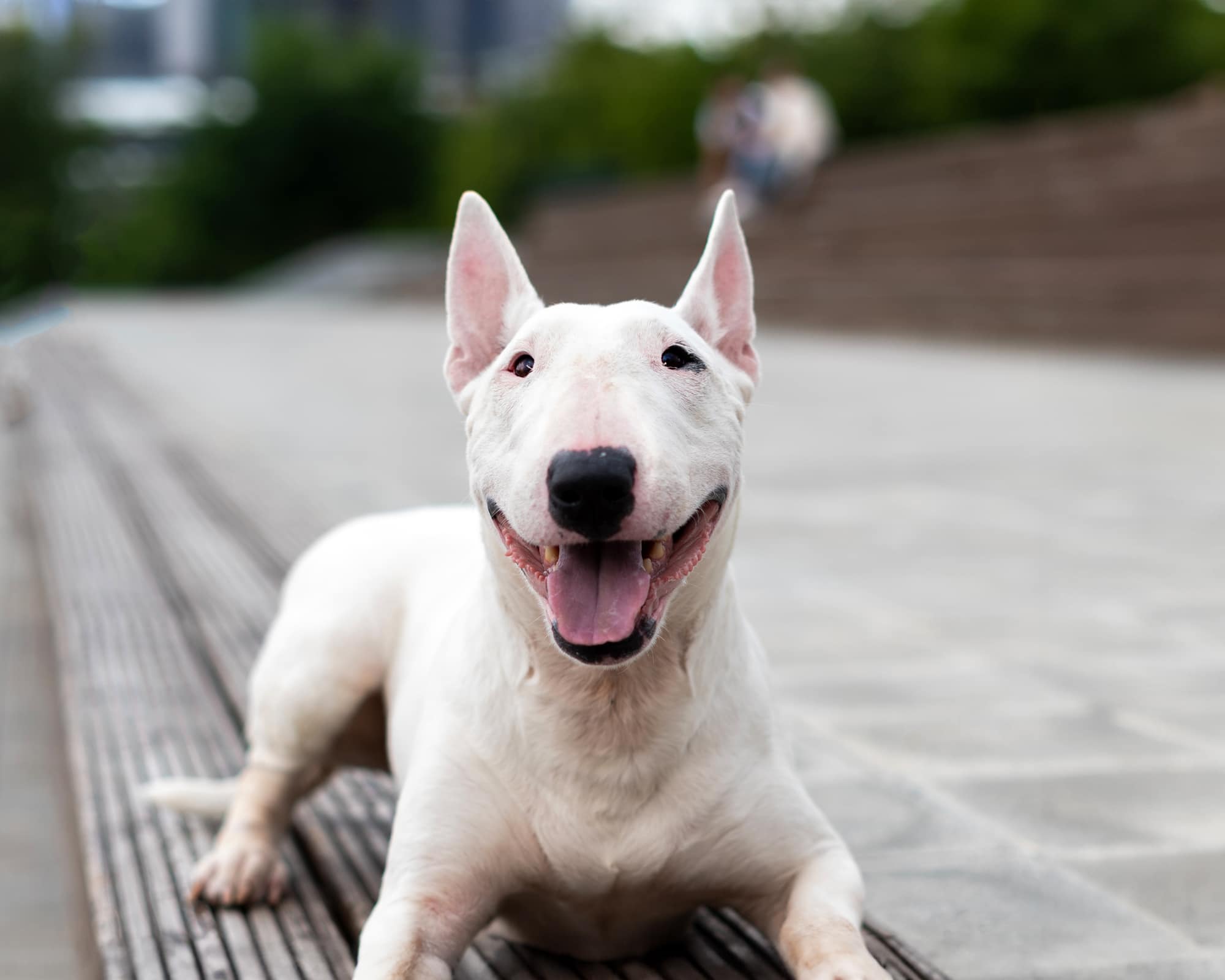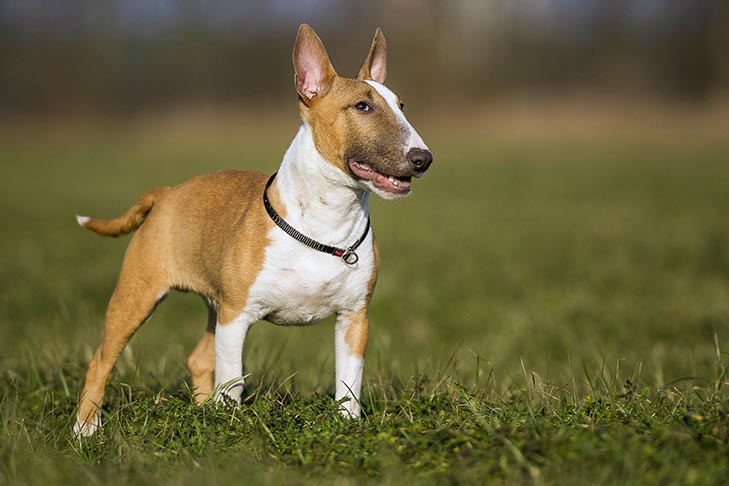Bull Terriers easily attract attention with their distinctive egg-shaped heads, sturdy builds, and lively yet stubborn personalities. However, beneath their captivating exterior lies specialized behavioral needs. If these needs aren't met, they can exhibit disturbing behaviors like excessive barking, furniture chewing, and sudden bouts of hyperactivity. These behavioral issues stem not from "bad habits" but from excess energy and unfulfilled instincts. This is where treadmills for dogs for sale come in handy. A high-quality dog treadmill isn't a luxury for active breeds; it's a practical tool for addressing Bull Terrier behavioral challenges. This article will analyze common Bull Terrier behavioral issues, highlight the shortcomings of traditional solutions, and explain how purchasing a dog runner machine can turn chaos into peace.

Key Takeaways
-
Bull Terriers need one hour of exercise every day. This helps them use their energy and lowers behavior problems.
-
Regular visits to the vet are important. They help find health issues early, which can affect behavior.
-
Training with positive reinforcement and socializing early are important. They help stop and fix behavior problems.
The Top Behavioral Problems in Bull Terriers (And Why They Happen)
Bull Terriers were originally bred for dog fighting and vermin hunting—roles that required intense energy, focus, and physical strength. Today, those traits remain, but they’re often trapped in a domestic setting with nowhere to go. When a Bull Terrier’s natural needs aren’t met, behavioral problems emerge. Let’s explore the most common ones.
Hyperactivity and “Zoomies” (That Never Seem to End)
If you own a Bull Terrier, you know about “zoomies”—those sudden, chaotic bursts of energy where your pup races around the house, jumps on furniture, or even nips at your feet. While occasional zoomies are normal for all dogs, Bull Terriers experience them far more frequently, and they can last for hours if their energy isn’t drained.
This hyperactivity stems from their high prey drive and muscular build. Bull Terriers need intense, consistent exercise to tire them out—not just a 15-minute walk around the block. A short stroll might calm a Chihuahua, but it’ll barely make a Bull Terrier break a sweat. Without proper outlets, their excess energy turns into hyperactive behavior that’s hard to manage.
Destructive Chewing (Your Shoes, Couch, and Everything In Between)
Bull Terriers have strong jaws—stronger than most medium-sized breeds—and they love to use them. If your Bull Terrier is chewing through your favorite shoes, tearing up the couch, or gnawing on table legs, it’s not because they’re “naughty.” It’s because they’re bored and need to release tension.
Chewing is a natural behavior for dogs, but Bull Terriers take it to another level when they’re understimulated. Their hunting instincts make them crave “work,” and if they don’t have a job (like chasing a ball or running), they’ll create their own—by destroying your belongings.
Excessive Barking (At Every Squirrel, Car, or Wind Chime)
Bull Terriers are vocal dogs, but excessive barking can become a problem. They bark at squirrels in the yard, cars passing by, or even the sound of a wind chime—sometimes for minutes on end. This isn’t just annoying for you; it can strain relationships with neighbors.
The root cause? Again, energy and instinct. Bull Terriers were bred to alert their owners to prey or threats, so they’re naturally vigilant. When they’re cooped up with nothing to do, their vigilance turns into overreaction. Every small sound becomes a “threat” worth barking at, simply because they have too much energy to burn.
Leash Aggression (Pulling, Lunging, and Snarling)
Taking a Bull Terrier for a walk can feel like a battle. They pull on the leash, lunge at other dogs or pedestrians, and sometimes snarl—even if they’ve never met the person or pup before. This leash aggression isn’t about being “mean”; it’s about frustration.
Bull Terriers are strong, and they want to go fast. When they’re stuck on a leash, unable to run or explore at their own pace, they get frustrated. That frustration often turns into aggression, making walks stressful for both you and your dog.
Why Traditional Solutions Fail Bull Terriers

You’ve probably tried the usual fixes: more walks, chew toys, or obedience training. But for Bull Terriers, these solutions often aren’t enough. Here’s why.
Walks Alone Don’t Drain Their Energy
A 30-minute walk might seem like enough, but for a Bull Terrier, it’s just the start. Their muscles and stamina are built for intense activity—like running at full speed for 10 minutes— not slow, steady walks. Walks also don’t address their mental stimulation needs. Bull Terriers get bored easily, and a walk around the same block every day won’t keep their brains busy.
Chew Toys Only Work Temporarily
Chew toys can distract your dog, but they only help for a short time. Studies show that dogs with chew toys are more active and less destructive. For example, Hubrecht's research found that shelter dogs with chew toys were less likely to chew things up. However, if your Bull Terrier is bored or anxious, they might still chew on your favorite shoes. To keep them interested, change their toys often and add new ones.
Training Can’t Fix Unspent Energy
Obedience training is important for Bull Terriers, but it won’t solve behavioral problems caused by excess energy. You can teach your Bull Terrier to “sit” or “stay,” but if they’re bouncing off the walls with energy, they’ll struggle to focus on your commands. Training works best when your dog is already tired—when their brain can focus on learning, not on burning energy.
Leash Restrictions Make Aggression Worse
Trying to “correct” leash aggression by pulling harder on the leash only makes it worse. Bull Terriers see pulling as a challenge, and they’ll pull back harder. This creates a cycle of frustration: you pull, they pull, you get angry, they get more aggressive. Walks become a negative experience for everyone involved.
How Treadmills for Dogs for Sale Solve Bull Terrier Behavioral Problems

Bull Terriers have a lot of energy. This can cause them to be hyper and have wild “zoomies” that seem to pop up suddenly. You might see your English Bull Terrier running around the house and bouncing off the walls. This behavior usually comes from having too much energy. Luckily, treadmills for dogs for sale can help manage this energy well.
Drains Excess Energy (Ending Zoomies and Hyperactivity)
The number one reason Bull Terriers have behavioral problems is unspent energy—and a dog treadmill fixes that. Unlike walks, a treadmill lets your Bull Terrier run at full speed, which is exactly what they need to tire out. Just 15–20 minutes of running on a treadmill can burn more energy than a 1-hour walk, leaving your Bull Terrier calm and relaxed (not bouncing off the walls).
Treadmills also let you control the intensity. On days when your Bull Terrier is extra hyper, you can increase the speed (safely, of course) to give them a more challenging workout. On slower days, you can keep it at a walk. Either way, the result is a tired dog who’s less likely to have zoomies or act out.
Reduces Destructive Chewing (By Keeping Them Busy)
A tired Bull Terrier is a well-behaved Bull Terrier—and a treadmill keeps them tired. When your Bull Terrier gets their daily run on the treadmill, they won’t have the energy to chew your shoes or tear up the couch. They’ll be too busy napping to even think about destroying your belongings.
Treadmills also provide mental stimulation. Bull Terriers have to focus on their pace and balance, which keeps their brains busy. This mental engagement is just as important as physical exercise— it prevents boredom, which is the main cause of destructive chewing.
Curbs Excessive Barking (By Calming Their Vigilance)
When a Bull Terrier is tired, they’re less likely to overreact to every small sound. A daily workout on the treadmill drains their energy, making them more relaxed and less vigilant. They’ll still bark at “real” threats (like a stranger at the door), but they won’t waste energy barking at squirrels or wind chimes.
Treadmills also create a routine, which Bull Terriers thrive on. When your pup knows they’ll get their run every day, they’ll be less anxious and more calm overall. Anxious dogs bark more; calm dogs bark less.
Improves Leash Behavior (By Reducing Frustration)
Leash aggression often comes from frustration—frustration at being stuck on a leash, unable to run. A treadmill lets your Bull Terrier run freely, which reduces that frustration. When they’ve already gotten their daily run in, they’ll be more willing to walk calmly on a leash. They won’t pull or lunge because they don’t have the energy to fight the leash.
Treadmills also help with leash training. When your Bull Terrier is tired, they’ll be more focused on your commands. You can use post-treadmill walks to practice “heel” or “stay,” and they’ll actually listen—because their brain isn’t clouded by excess energy.
Adding a treadmill to your Bull Terrier's routine can fix many behavior problems. It’s a great way to make sure they get the exercise they need to stay happy and healthy.
How to Introduce Your Bull Terrier to a Dog Treadmill

Introducing your English Bull Terrier to a dog treadmill can be a fun experience! Start by making sure your dog feels comfortable with the treadmill. Here’s how to do it step by step:
-
Introduce the Slat Mill: Let your Bull Terrier explore the treadmill at their own pace. Allow them to sniff around and get familiar with it. This helps them feel safe and secure.
-
Hook Them Up: Once your dog seems comfortable, attach them to the treadmill without making them work. Just let them stand there for a bit. Praise them during this time to create a positive association with the treadmill.
-
Encourage Movement: Fit a harness on your Bull Terrier and gently encourage them to move on the treadmill. Be patient! Let them learn at their own pace. If they seem hesitant, don’t rush them.
Using these steps can help prevent any problems that might arise from introducing your Bull Terrier to the treadmill too quickly. Remember, the goal is to make this a positive experience. With time and encouragement, your dog will likely enjoy their new exercise routine!
By incorporating a treadmill into your Bull Terrier's care, you can help manage their energy levels and reduce behavioral issues. It’s a great way to keep them happy and healthy!

Final Thoughts: Treadmills for Dogs for Sale—A Game-Changer for Bull Terrier Owners
Bull Terriers are amazing dogs, but they’re not easy. Their high energy and strong instincts can lead to behavioral problems that feel impossible to fix. But with the right tool—like a dog treadmill from our treadmills for dogs for sale—you can turn those problems into solutions.
A dog treadmill doesn’t just give your Bull Terrier exercise—it gives them the right kind of exercise. It drains their energy, keeps their brain busy, and reduces frustration—all of which lead to calmer, better-behaved dogs. It also makes your life easier: no more chasing a hyper pup around the house, no more replacing chewed shoes, and no more stressful walks.
If you’re a Bull Terrier owner struggling with behavioral problems, don’t give up. Our treadmills for dogs for sale are designed to meet your pup’s unique needs, and they’re backed by our 2-year warranty and 30-day money-back guarantee. You have nothing to lose—and everything to gain: a happy, healthy, and well-behaved Bull Terrier.
Ready to take the first step? Browse our treadmills for dogs for sale today, or contact our team to learn more. Your Bull Terrier (and your couch) will thank you!🐾










0 Comments